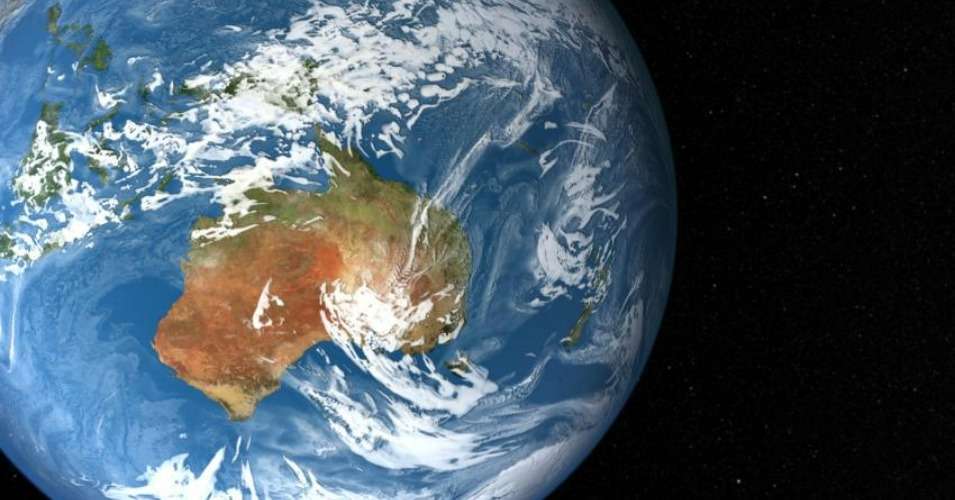Over 15,000 Scientists Just Issued a ‘Second Notice’ to Humanity. Can We Listen Now?
ENVIRONMENT, 20 Nov 2017
Andrea Germanos – Common Dreams
Reassessing warning issued 25 years ago, the “second notice” to humanity warns of “widespread misery and catastrophic biodiversity loss” unless business-as-usual is upended.

“Humanity is not taking the urgent steps needed to safeguard our imperiled biosphere,” over 15,000 scientists warned in a letter published Monday 13 Nov 2017. (Photo: NASA)
13 Nov 2017 – Yikes.
Over 15,000 scientists hailing from more than 180 countries just issued a dire warning to humanity:
“Time is running out” to stop business as usual, as threats from rising greenhouse gases to biodiversity loss are pushing the biosphere to the brink.
The new warning was published Monday in the international journal BioScience, and marks an update to the “World Scientists’ Warning to Humanity” issued by nearly 1,700 leading scientists 25 years ago.
The 1992 plea, which said Earth was on track to be “irretrievably mutilated” baring “fundamental change,” however, was largely unheeded.
“Some people might be tempted to dismiss this evidence and think we are just being alarmist,” said William Ripple, distinguished professor in the College of Forestry at Oregon State University, and lead author of the new warning. “Scientists are in the business of analyzing data and looking at the long-term consequences. Those who signed this second warning aren’t just raising a false alarm. They are acknowledging the obvious signs that we are heading down an unsustainable path.”
The new statement—a “Second Notice” to humanity—does acknowledge that there have been some positive steps forward, such as the drop in ozone depleters and advancements in reducing hunger since the 1992 warning. But, by and large, humanity has done a horrible job of making progress. In fact, key environmental threats that demanded urgent attention a quarter of a century ago are even worse now.
Among the “especially troubling” trends, they write, are rising greenhouse gas emissions, deforestation, agricultural production, and the sixth mass extinction event underway.
Taking a numerical look at how some of the threats have grown since 1992, the scientists note that there’s been a 26.1 percent loss in fresh water available per capita; a 75.3 percent increase in the number of “dead zones”; a 62.1 percent increase in CO2 emissions per year; and 35.5 percent rise in the human population.
“By failing to adequately limit population growth, reassess the role of an economy rooted in growth, reduce greenhouse gases, incentivize renewable energy, protect habitat, restore ecosystems, curb pollution, halt defaunation, and constrain invasive alien species, humanity is not taking the urgent steps needed to safeguard our imperiled biosphere,” they write.
Among the steps that could be taken to prevent catastrophe are promoting plant-based diets; reducing wealth inequality, stopping conversions of forests and grasslands; government interventions to rein in biodiversity loss via poaching and illicit trade; and “massively adopting renewable energy sources” while phasing out fossil fuel subsidies.
Taking such actions, they conclude, are necessary to avert “widespread misery and catastrophic biodiversity loss.”
“Soon it will be too late to shift course away from our failing trajectory, and time is running out. ”
The goal of the paper, said Ripple, is to “ignite a wide-spread public debate about the global environment and climate.”
________________________________________
Andrea Germanos is senior editor and a staff writer at Common Dreams.
This work is licensed under a Creative Commons Attribution-Share Alike 3.0 License.
Go to Original – commondreams.org
DISCLAIMER: The statements, views and opinions expressed in pieces republished here are solely those of the authors and do not necessarily represent those of TMS. In accordance with title 17 U.S.C. section 107, this material is distributed without profit to those who have expressed a prior interest in receiving the included information for research and educational purposes. TMS has no affiliation whatsoever with the originator of this article nor is TMS endorsed or sponsored by the originator. “GO TO ORIGINAL” links are provided as a convenience to our readers and allow for verification of authenticity. However, as originating pages are often updated by their originating host sites, the versions posted may not match the versions our readers view when clicking the “GO TO ORIGINAL” links. This site contains copyrighted material the use of which has not always been specifically authorized by the copyright owner. We are making such material available in our efforts to advance understanding of environmental, political, human rights, economic, democracy, scientific, and social justice issues, etc. We believe this constitutes a ‘fair use’ of any such copyrighted material as provided for in section 107 of the US Copyright Law. In accordance with Title 17 U.S.C. Section 107, the material on this site is distributed without profit to those who have expressed a prior interest in receiving the included information for research and educational purposes. For more information go to: http://www.law.cornell.edu/uscode/17/107.shtml. If you wish to use copyrighted material from this site for purposes of your own that go beyond ‘fair use’, you must obtain permission from the copyright owner.